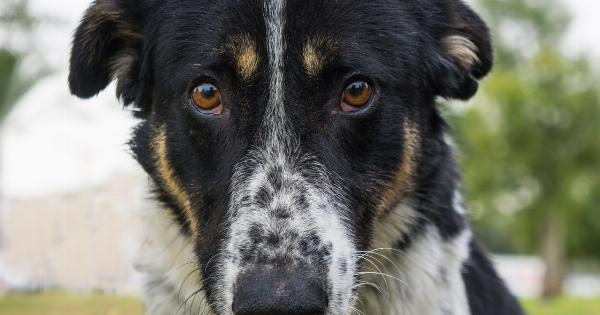Dogs have long been considered man’s best friend, but their abilities go far beyond companionship. These incredible creatures have an extraordinary sense of smell that enables them to detect a wide range of medical conditions in humans.
From cancer to diabetes, dogs can sniff out diseases with astonishing accuracy, making them valuable allies in the field of medicine. In this article, we explore the remarkable abilities of dogs and their potential to revolutionize healthcare.
The Power of a Canine Nose
It is no secret that dogs have an exceptional sense of smell. In fact, their olfactory system is estimated to be around 10,000 times more powerful than that of humans.
While humans have roughly six million olfactory receptors, dogs have an astounding 300 million or more. This incredible sense of smell allows them to detect scents and odors that are imperceptible to us.
When it comes to sniffing out medical conditions, dogs rely on their acute sense of smell to detect subtle chemical changes that occur within the human body.
Many diseases and conditions are associated with metabolic changes that result in the release of volatile organic compounds (VOCs) through breath, sweat, or bodily fluids. These VOCs are often too subtle for human detection, but not for a well-trained canine.
An Unmatched Success Rate
Research and anecdotal evidence have shown that dogs possess an uncanny ability to detect various medical conditions. One of the most impressive feats of dogs is their remarkable success in identifying different types of cancer.
Numerous studies have demonstrated that trained dogs can sniff out cancer by analyzing breath or urine samples with an astonishing success rate.
In a study published in the journal Gut, dogs were trained to detect bowel cancer by sniffing stool samples. The results were astounding, with the dogs correctly identifying cancer samples 95% of the time.
These findings highlight the potential for using dogs as a non-invasive, reliable, and cost-effective alternative to traditional diagnostic techniques.
Dogs have also shown exceptional skills in detecting other types of cancer, including lung, ovarian, and breast cancer.
Similar studies have reported success rates ranging from 88% to 97%, further affirming the extraordinary abilities of our four-legged friends.
Sniffing Out Diabetes
In addition to cancer, dogs can also detect a range of other medical conditions, such as diabetes. People with diabetes often experience changes in their body odor that are undetectable by humans but can be picked up by a dog’s sensitive nose.
These scent changes are attributed to the fluctuating levels of blood glucose, which result in the release of specific VOCs.
Alert dogs trained to recognize the scent of low or high blood sugar levels can be life-changing for individuals with diabetes. They can act as an early warning system, alerting their owners before their blood sugar reaches dangerous levels.
This enables individuals to take timely action, preventing potential medical emergencies.
Assistance Dogs in Action
The abilities of dogs to detect medical conditions have led to the development of assistance dogs that are specially trained to provide support and assistance to individuals with various health conditions.
These assistance dogs can alert their owners to an oncoming medical event, such as an epileptic seizure or a sudden drop in blood sugar levels.
For individuals with conditions like epilepsy, the assistance of a seizure-alert dog can be life-saving. These dogs are trained to recognize the subtle changes that occur in their owner’s body odor, behavior, or movements prior to a seizure.
By alerting their owners, these dogs provide invaluable assistance and allow individuals to take necessary precautions.
Ongoing Research and Potential Applications
While the abilities of dogs in sniffing out medical conditions are remarkable, there is still much to learn and explore in this fascinating field.
Researchers are continuing to investigate how dogs can detect various diseases and are exploring potential applications in healthcare.
For instance, scientists are studying whether dogs can be trained to detect early-stage cancers that are often missed by conventional diagnostic methods.
If successful, this could have a significant impact on cancer mortality rates by enabling early detection and treatment.
Additionally, researchers are investigating the potential of using dogs’ olfactory skills to identify other diseases, such as Parkinson’s disease, malaria, bacterial infections, and even COVID-19.
The goal is to develop reliable and non-invasive screening methods that can help identify diseases in their early stages, leading to better outcomes for patients.
As research progresses and our understanding of dogs’ olfactory capabilities deepens, the possibilities for their application in healthcare seem endless.
From assisting in the early detection of diseases to acting as a medical alert system, dogs have the potential to revolutionize the way we approach healthcare.
The Importance of Proper Training
While dogs have an innate ability to detect scents, proper training is crucial to ensure they are effective in detecting medical conditions.
A rigorous and systematic training process is required to identify dogs with the highest potential for medical scent detection and to teach them to communicate their findings to humans.
Organizations and programs dedicated to training medical detection dogs play a vital role in this process.
These programs carefully select and train dogs, often utilizing positive reinforcement techniques to develop their skills and ensure their reliability in real-life scenarios.
The Human-Canine Connection
The relationship between dogs and humans is unique, built upon trust, loyalty, and companionship. Dogs have an innate ability to understand and bond with humans, making them ideal partners in the field of healthcare.
Their non-judgmental nature and unconditional love make them perfect for providing emotional support to individuals dealing with medical conditions.
Furthermore, the use of sniffer dogs in medical settings has shown promise in reducing patient anxiety and improving their overall experience.
The presence of dogs can create a calming environment, distracting patients from pain or discomfort, and providing a sense of comfort and security.
Dogs as Early Healthcare Providers
Given their remarkable abilities and the potential applications, it is not far-fetched to envision a future where dogs are incorporated into routine healthcare.
As part of a preventive approach, dogs could be used as early healthcare providers, assisting in the early detection of a wide range of medical conditions.
By utilizing their exceptional sense of smell, dogs could assist in the screening and monitoring of diseases, eventually leading to improved patient outcomes and reduced healthcare costs.
From cancer screening clinics to diabetes management programs, dogs could become an integral part of our healthcare system.
Conclusion
The abilities of dogs to sniff out medical conditions are truly incredible. Their extraordinary sense of smell and trainable nature make them powerful allies in the field of healthcare.
From detecting cancer to alerting individuals with diabetes, these four-legged heroes have the potential to save lives, improve patient outcomes, and revolutionize the way we approach medicine. As research and training programs continue to advance, we can expect to witness even more incredible feats from our canine companions in the realm of medical condition detection.





























